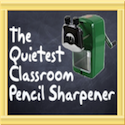I taught second grade for 20 years. I never thought I would do anything else. But when your dream job kind of lands in your lap, you jump on it.
I've always loved technology and I've taught hundreds of hours of tech workshops for my district. I always LOVE supporting teachers because I don't understand how they can continue doing their jobs well without support. They have SO many demands on their time now days. So, to get to do all of this WHILE still teaching....yes, please!
Many people have asked what I'm doing this year. My official title is a Technology Integration Specialist, also listed often as an Instructional Technology Specialist but commonly referred to as a Technology Coach.
Since accepting this position, I've come to find out that a technology coach can look very different depending on the location. Many tech coaches serve a district and are assigned to multiple schools. Some tech coaches are at one school and solely help teachers integrate technology into their lessons (do not trouble shooting or other duties).
I wasn't really sure what my job was going to look like at the beginning of the year, and as most of you know, I'm a major PLANNER so that was stressing me out!
I'm definitely still learning as I go and I've learned that my position may evolve and look different from year to year. At this time, most high schools and middle schools in my district have tech coaches but not many elementary schools. In fact, there are over 50 elementary schools in my district and only 4 have tech coaches - two of us being new this year.
So, what does this mean? What do I do from day to day? I'm lucky that my position is at the school I've taught at for the past 12 years. I already know the staff and the resources we have available. My main job is to help teachers integrate technology into their classrooms. Grades 3-5 are 1:1 with chromebooks and grades k-2 have iPads. We also have laptop carts and a computer lab available.
Teachers can sign up for me to come into their classrooms to teach lessons, introduce new tech tools, help them with lessons, be an extra set of hands, etc. They can also sign up for me to help them plan or hash out ideas. Some examples of things I've done this year include - teaching students to use Flipgrid, Green Screen, SeeSaw, Chatterpix, Quizizz, Digital Breakouts, and more!
So, there's no set schedule for each day (eek!) - it's really just whatever the teachers need. Some days are super filled while other days I have more flexibility. Open times give me a chance to deal with all of the troubleshooting (aka tech problems) - think Promethean boards not working, computer, problems, printer, issues, etc. This is, not surprisingly, the least favorite part of my job, but I do realize how important it is and therefore try to stay on top of it. I know how it feels to have 24 little faces staring at you when you can't get your board to work...and then having to revamp your entire day that was centered around technology! I try to get these issues resolved asap.
When there aren't too many issues going on, I get to work on the other parts of my job - planning/reviewing professional development, scheduling virtual field trips, exploring new apps/programs, creating instructional videos for our staff, updating the school website, adding to our school's Instagram account, creating flyers and QR codes for school events, broadcasting our school's morning news program, helping students create green screen promotional videos for school events, and more!
Here's a peek at this week's sign up (aka my schedule) to give you an idea of a typical week.
As you can see, Halloween digital breakouts have been in high demand this month! And, you can also see that I'm also pulled for coverage of classes and asked to help with standardized test administration. It can't all be fun, right?! :P
So, while I'm in a new position you'll probably notice a shift here on my blog. I'll be sharing even more tech integration posts with you - maybe bringing back my Appy Classrooms series, too. I can't wait to share some of the things I've been working on with you!
If you have any questions about the tech coach position, leave them below!




































